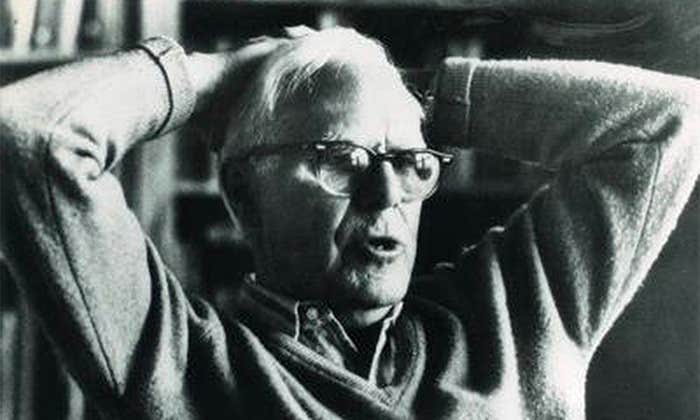By the time Cornelis Drebbel built an oven with a simple thermostat, one of the first manmade feedback mechanisms in history, in the 1620s, he was regarded in Europe as a magisterial, if not mad, inventor. He had already enchanted royalty and common people alike with elaborate clocks, projected-light spectaculars, fireworks displays, and a submarine. One modern scholar says Shakespeare used Drebbel as a model for Prospero, his noble sorcerer, who rules the mysterious island in The Tempest.
The comparison fits. Like the Bard’s wise duke, Drebbel was a Renaissance man whose inventions seemed to bend nature to his design. Drebbel appeared to have such an uncanny mastery over the elements that some suspected him of sorcery. Constantijn Huygens, diplomat and friend of Galileo and Descartes, warned his son Christiaan to steer clear of the charismatic man “whose magic might come from the Devil.”
What’s remarkable about Drebbel today, other than the fact the bewitching Dutch genius is so little known, is how much he has to teach us about the birth and progress of science. He built his oven at a time when a “vital” worldview, in which inanimate objects contain living energy, forged a prelude to the mechanical age.
“Drebbel’s circulating oven,” as historians of science now call it, included an early thermometer with a heat scale. It regulated itself with a feedback-control device that is a progenitor of the ubiquitous systems that regulate the air we breathe in homes, offices, trains, planes, and automobiles. His oven is one of the earliest devices that gave human control away to a machine and thus can be seen as a forerunner of the smart machine, the self-deciding automaton, the thinking robot.
It’s an ironic tale because Drebbel’s oven also embodies a vitalist spiritual philosophy. He was a master craftsman, but strictly mechanical inventions weren’t his goal. Drebbel always claimed to have drawn his wisdom from nature, declaring that he never read Latin or the classical authors, or enriched his writing with ancient wisdom. He regarded inventions like his oven as public demonstrations of the elemental forces of nature—earth, water, air, fire.
Bert Hall, a retired historian of technology at the University of Toronto, compares Drebbel to Issac Newton. “Alchemical types of the period like Newton—the great magus—want everything to make sense; they want absolutes,” Hall says. “There can’t be anything extraneous. That’s one of the differences between pre-modern and modern thinking.” “As Above, So Below,” summarizes the alchemical belief that everything in the macrocosm of the universe is related to everything in the microcosm of humanity. This was the philosophy that guided Drebbel as he forged his furnace. His thermostatic oven gave the world an early feedback mechanism. But it was a grander feedback that Drebbel was after.
Drebbel was the son of a farm-owning family in North Holland. He was an apprentice, then journeyman artisan with relatively little schooling. Huygens said he “looked like a Dutch farmer.” The young maker fabricated engravings, maps, clocks, and lenses for eyeglasses and telescopes. From an early age he was steeped in the arcane lore of alchemy, which aimed at producing the philosopher’s stone, a magical substance that could convert base metals to gold—the magnum opus. The Dutch master-engraver, Hendrik Goltzius, who taught Drebbel, lost an eye to an alchemical experiment gone wrong, and the apprentice Drebbel married one of Goltzius’ sisters.
In 1605, Drebbel and his budding family settled in England. In no time, he was embraced by James I, King of England and Scotland, and became a favorite entertainer at court. The reticent inventor, known for his talents, sly wit, and heavy Dutch accent, entertained the court with light projection and fireworks. Later, during his second stint at court the magician/inventor unveiled his “living instruments,” the most prominent being a “perpetual-motion machine,” a cosmological clock containing a circular glass tube with a little bead of liquid that mysteriously stayed in near-continuous motion. Far beyond the English court, the astronomer Johannes Kepler and the painter Peter Paul Rubens were enraptured by Drebbel’s clock.
His oven is one of the earliest devices that gave human control away to a machine and thus can be seen as a forerunner of the smart machine, the self-deciding automaton, the thinking robot.
Drebbel’s wonders never ceased. One hot midsummer’s day, the King found himself cooling his heels in the Gothic splendor of London’s Westminster Abbey when Drebbel managed to cause the Great Hall’s vast, vaulted space to grow unnaturally cool. It was a compliment to the royal personage, who, it seems, had a chronic skin condition and suffered cruelly from the heat. Like any good magician, Drebbel didn’t reveal how he turned summer to winter, however. (One chemist speculates that the crafty Dutchman probably placed vats of ice in the balconies above and then melted it with salt, allowing the cool air to cascade down to the cathedral’s floor.) Not long after he chilled the church, Drebbel caused a sensation by demonstrating on (and under) the Thames River what is arguably the first navigable submarine, a rowboat with oars that he’d turned into a kind of mobile diving bell by erecting a leather-covered sunroof that sealed the water out. Onlookers packed the shorelines to watch the vessel mysteriously vanish, and waited anxiously for it to reappear.
Drebbel’s fame was a twin-headed beast. Many deemed him a mere “Engeneere,” a high-end laborer who executed tasks for his betters. Not a few Oxford and Cambridge men considered him what Isaac Newton later termed a “Vulgar Mechanick,” certainly no philosophical gentleman of the learned academy, only a royal sponger, unlettered mountebank and chancy charlatan. It didn’t help that the man persisted in peddling his inventions like any Dutch tradesman, dressed poorly, and chain-smoked to boot.
Yet Drebbel intended to challenge the elites, notes Vera Keller, a historian of science and noted Drebbel scholar at the University of Oregon. “Drebbel cast his reticent style as part of a spiritual and social attitude toward knowledge and to whom it belonged,” Keller writes. He “contrasted himself with those who sought fame by setting themselves up as greater authorities than others through the writing of books. Aren’t we all brothers? When we test ourselves, we find that we have all been created by God as kings with all of nature as our inheritance.”

An oven might have seemed like a mundane development for the spiritual sojourner. But it was a manifestation of his ambitions in alchemy. “He devoted himself to alchemy, in which he claims to have uncovered miraculous things, and inventions of wonderful furnaces, among them that will maintain the fire at any degree of heat desired, whether hotter or colder,” wrote Nicolaus Claude Fabri de Peiresc, one of Drebbel’s correspondents, in 1624. Indeed, writes Keller, “Drebbel’s ideas about motion were developed primarily in an alchemical context, to which he applied mechanics.”
Amazingly, Drebbel’s thermostat-equipped furnace functioned according to modern feedback control concepts, in which a sensor detects changes in the output of a system and then modifies the input to correct for those changes and bring the system back to its original state. Did Drebbel know he had created a feedback loop? “He sort of did, but he didn’t articulate it,” says Hall. “Call it embedded knowledge.”
Drebbel never publicly described the mechanical underpinnings of his circulating oven, possibly to protect his product. Back then, nothing like real patent or copyright law held sway and plagiarism was rampant. Secrecy was standard alchemical practice in any case, as all the important transmutation formulae were encoded in arcane symbols.
Not a few Oxford and Cambridge men considered him a “Vulgar Mechanick,” a royal sponger, unlettered mountebank, and chancy charlatan.
In the 1970 book, The Origins of Feedback Control, Smithsonian historian Otto Mayr suggests that Drebbel had seen a widely circulated manuscript that contained a diagram of an ancient Greek feedback device, built by the mechanician Ktesibios around 250 B.C. This gadget closely resembled the oven’s float valve, as well as the valves in our modern toilets. Water will flow into a toilet bowl until the rise of the float ball and attached lever arm trigger a valve that shuts down the inflow. In this case, the position of the float ball senses the height of the water, enabling the float regulator to automatically meter out the same exact volume or weight of water time and again.
Drebbel may have reasoned that a similar principle could apply to heat flow, so that he could build a device that meters out the same heat time and again. The analogy may have been a natural one for Drebbel, since alchemy held that the four elements transform into each other in a cycle, rarifying and condensing through heat and cold, and producing such movement in nature as winds, storms, and the cycle of life.
This natural philosophy would have been matched by the master craftsman’s observations. He must have seen how heat ripples through objects as they heat and cool, and that hot materials expand and cooler ones contract. One of his diagrams showcases a phenomenon of transference through heat. In it, a piece of glassware whose mouth opens into a bath of water surrounding the vessel is warmed at its base. This causes air to shoot out of the mouth and bubble through the water. Then, when the vessel cooled, the water rose within the tube far above the level of the bath.
With these observations, Drebbel created the first thermostat. It was an L-shaped glass tube filled with alcohol that was topped off by mercury. A metal rod floated in the quicksilver. When the heated alcohol expanded, it pushed up the quicksilver, and the rod rose in the tube. The rising rod then pressed on a lever arm, which adjusted the size of a vent at the top of the furnace. As a chimney designer, Drebbel would have known how flue vents control fires. Flames in an oven can be controlled by the size of the aperture above, which determines the draft. Likewise, the fire that heated Drebbel’s furnace was tempered by the size of the vent hole at the top of the oven, which was in turn managed by the rising and falling rod.
The oven comprised three metal boxes that were nested like Russian matryoshka dolls, with a fire below them. The outer box enclosed a chimney-like passage that swept around the other two and exited out a vent at the top. The next box held water, a heat buffer to protect the center box, which contained a sample to be heated. The base of the thermostat, or “feeler,” slipped into the water-filled box. It registered the fire’s heat and responded to changes by automatically adjusting the valve in a way that curtailed or boosted the heat of the fire. What’s more, a person could set the desired temperature, and the oven would oblige.

In this artist’s rendering, Drebbel’s circulating oven incubates eggs. The oven consists of three nested metal boxes atop an enclosed fire. Fumes from the fire rise up through vents into the outer box, and out of an opening at its top. The middle box contains water, which provides a buffer between the high heat circulating in the outer box and the center box containing eggs, or alchemical metals (not shown here). The alchemist’s early thermostat sits in the water just touching the center box. It is an L-shaped glass tube filled with alcohol and topped off by mercury. A metal rod floats in the quicksilver. When the heated alcohol expands, it pushes up the quicksilver, and the rod rises in the tube. If the heat of the fire rises beyond a set point, the floating rod elevates high enough to lower the damper, cutting off the air that feeds the fire. The fire would then diminish, as would the temperature in the center box. If the heat falls too far, so does the rod, with its lever opening the vent to admit air. Drebbel ensured that the floater rod was adjustable with machined screw threads that let users set the desired heat level.
Although he touted its use as an egg incubator, Drebbel probably built the oven to transmute base metals into gold; apparently many alchemists thought it might be feasible if an initial base-metal mixture were heated at a moderate, constant temperature for an extended time. They also thought that using an egg-shaped crucible for the mystical purification process would help it function like a real egg—a static, supremely symbolic object within which a magical metamorphosis takes place. No wonder alchemists sometimes called their crucible the ovum philosophicum, the philosophical egg. In placing an actual egg inside the incubator, Drebbel may have intended to demonstrate that his machine could transmute matter.Balthasar de Monconys, a 17th-century French diplomat, magistrate and natural philosopher, wrote that the inventor considered the oven “as important as the magnum opus, the transformation of metal to gold.
Drebbel’s achievement was astonishing: Informed by a piece of ancient plumbing, he invented an iconic first feedback device. His thermostat provided a seminal example for feedback-control devices of the 18th century, when inventors came up with all manner of float valves, pressure regulators, and centrifugal governors to manage steam engines. Today, feedback loops and automatic control are greatly amplified by the recursive power of digital logic and computers.
Of course, the 17th-century inventor could not have predicted his retrospective fame. Drebbel was never a practical man. Despite his success, Drebbel could never make enough money. At the end of his life, the aging Dutch master ran an alehouse. He passed away in 1633, practically a pauper, according to some reports. His children and in-laws sold a 14-year patent for his ovens, and during the 1640s and 1650s it was the subject of widespread interest. It was used as an egg incubator, a natural science demonstrator for drawing rooms, and as lab furnaces across Europe and even in New England.
Drebbel’s circulating oven came at a pivotal time in the history of science, at the still-indistinct beginnings of a paradigm-changing revolution, one that would bring about the mechanical age and enormous advances in technology. From today’s viewpoint, Drebbel’s furnace was a technological marvel created by a magician on a quest to uncover the vital secrets of nature. His story shows us how a bit of serendipity, a belief in magic, and some craftsman’s smarts helped spark early science. Perhaps it’s all just part of what Drebbel meant when he advised, “Practice your gifts rightly.”
Steven Ashley is a New York City-based science and technology writer.
Additional Reading
Franck, F. Drebbel’s Athanor and furnaces. Compiled for www.drebbel.net (2013).
Keller, V. How to Become a Seventeen Natural Philosopher: The Case of Cornelis Drebbel (1572-1633). A chapter in:Dupré, S. & Lüthy, C. Silent Messengers: The Circulation of Material Objects of Knowledge in the Early Modern Low Countries Transaction Publishers (2011).
Keller, V. Re-entangling the thermometer: Cornelis Drebbel’s description ofhis self-regulating oven, the regiment of fire, and the early history of temperature. Nuncius: Journal of the History of Science28, 243 (2013).
Keller, V. Drebbel’s Living Instruments, Hartmann’s Microcosm, and Libavius Thelesmos: Epistimic Machines Before Descartes. History of Science 48 (2010).
Mayr, O. The Origins of Feedback Control MIT Press (1970).




























